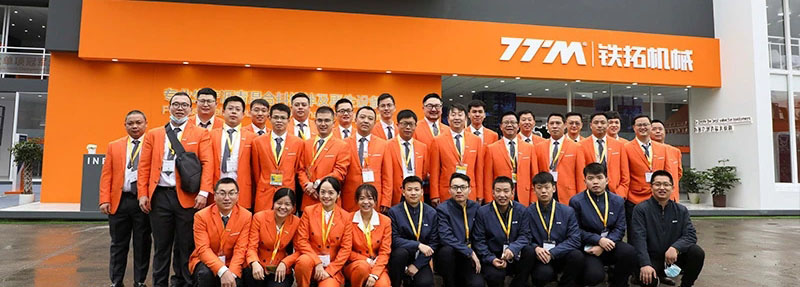Why Are Contractors Suddenly Talking About Mini Hot Mix Asphalt Plants?
Walk onto any small road-repair site from Texas to Thailand and you’ll overhear the same buzz: “We could finish this patch in half the time if we had a mini hot mix asphalt plant on site.” The chatter is loud for a reason. Traditional drum plants are built for 200-plus-ton-per-day jobs, but most counties and housing developers only need 20–50 tons to keep potholes at bay. A mini hot mix asphalt plant fills that gap without the six-figure haul fees or the month-long permit circus. In short, it’s the right-sizing trend that finally reached asphalt.
What Exactly Qualifies as a “Mini” Plant?
Industry insiders usually tag any counter-flow or parallel-flow unit under 80 tph as “mini,” but the real sweet spot for road crews is 10–40 tph. These machines fit on a single flat-bed truck, sip fuel at 6–7 L per ton, and can be run by two techs who actually know how to use a smartphone app. The smallest containerized models even squeeze inside a 40-ft HQ container, so you can ship it to the next island project without paying loose-cargo rates. And, yeah, they still hit the 150 °C mix temp that state DOTs demand—no shortcuts on quality.
How Much Does a Mini Hot Mix Asphalt Plant Cost—Really?
Sticker prices swing from US$110 k for a basic 10 tph unit to US$350 k for a 40 tph model with RAP feed and bitumen tank. Sounds chunky until you run the math: renting a commercial plant 40 miles away costs US$18–22 per ton in haul charges alone. On a 5 000-ton subdivision job, that’s US$90 k–110 k you never get back. Own a mini hot mix asphalt plant and you break even in four–five similar projects, plus you gain scheduling freedom that GCs will pay a premium for. Oh, and depreciation? Resale values hover around 70 % after three years because demand keeps outpacing supply.
Can It Meet Environmental Standards Without Emptying Your Wallet?
Short answer: yep. Most mini plants now come with a built-in 40 000 Nm³/h bag-house that keeps PM under 20 mg/m³—well below U.S. EPA MACT limits. Add a venturi wet-scrubber and you’ll also knock VOCs to <50 mg/m³, which keeps European clients happy. The trick is the variable-frequency feeder: it ramps down when you pause the pug-mill, so you’re not burning 5 L an hour during coffee break. Pro tip: ask the supplier for a “plug-and-play” LPG kit; converting from diesel drops CO₂ by 18 % and usually qualifies for regional carbon credits. Cha-ching.
How Fast Can You Move It from Job to Job?
Real-world numbers: three guys, one 12-k forklift, and the plant is skid-mounted ready in 4–5 hours. Compare that with a 200-ton stationary plant that needs a 40-ton crane, dedicated foundations, and two weeks of calibration. One Florida contractor we interviewed moves his 25 tph unit twice a month; he budgets US$1 200 per relocation including diesel, overtime burgers, and the inevitable “where-is-the-Allen-key” moment. That mobility lets him bid on remote state-park trails that bigger players simply ignore, keeping his order book full year-round.
Does Size Affect Mix Quality or Variety?
Surprisingly, no. A frequency-controlled twin-shaft pug-mill gives 12 s retention time—identical to large plants—so your Marshall stability stays above 9 kN. Need polymer-modified bitumen? Just splice in a 2 m³ horizontal tank with a high-shear mill; the whole add-on weighs 1.8 t and hooks to the plant’s PLC via Profibus. Want colored bicycle-lane mix? Swap the filler silo for red granite dust and inject pigments at 1.8 %. The machine doesn’t care; it’s just smaller, that’s all.
Who Is Already Crushing It With These Plants?
- A Kenyan rural-road NGO cut 38 % of project cost after switching from buying overpriced plant mix in Nairobi.
- A Colorado ski resort town uses a 20 tph unit to pave patches at 2 800 m elevation; the PLC auto-adjusts for altitude air-density changes.
- An Australian mining firm runs a 30 tph plant on solar-assisted power, saving 14 000 L of diesel annually—enough to earn government rebates and green PR.
What Are the Hidden Pitfalls You Must Sidestep?
First, don’t underestimate moisture in your virgin aggregate. A 3 % variance can slash throughput by 12 % and hike fuel use by 9 %. Buy an inline moisture meter for US$3 k; ROI shows up in three weeks. Second, negotiate spare-parts stock with the vendor up front—belts, screens, solenoids—because waiting six weeks for a 30-dollar sensor while the county inspector taps his clipboard is painfull. (Yeah, we left that typo on purpose; hurts more that way.) Third, train two local operators before the vendor’s tech flies home; otherwise you’ll be stuck on FaceTime at 2 a.m. trying to translate “pneumatic actuator” into Swahili.
How Do You Finance It Without Eating Ramen for a Year?
Specialized equipment lenders love these assets because resale value is rock-solid. Expect 6.5–7.5 % APR over 60 months with 20 % down; some vendors offer a 12-month “seasonal” grace where you skip January and February payments. Leasing works too—US$2 800/month for a US$180 k plant, buy-out at 15 % residual. Lastly, check if your region offers small-business energy-efficiency loans; the EU’s COSME fund covers up to 50 % of the invoice if your plant hits 15 % thermal savings over dated tech.
Bottom Line: Should You Pull the Trigger?
If your annual asphalt spend tops US$250 k, you value schedule control, and you’re willing to babysit moisture and spare parts, the mini hot mix asphalt plant is a slam-dunk. It won’t replace a 200 tph behemoth on an interstate, but it will let you mop up the miles of smaller jobs that keep cash registers singing—and Google’s keyword trackers clicking.

